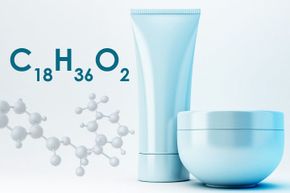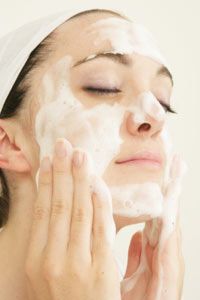Most people couldn't tell you what oil pastels, hard candies and soap all have in common. Yet there is a single link: Each of them contains a crucial ingredient called stearic acid. Though you might not have noticed it before, once you start to look for it, you'll find stearic acid in many of the products you use every day, including candles, shaving creams, cosmetics and medicine. But it's in skin cleansers that stearic acid really takes a starring role.
Stearic acid is one of many fatty acids that occur naturally in various plants and animal derivatives. It's found in such products as animal tallow, cocoa butter and vegetable fats. When it's used in cosmetic products, stearic acid primarily fulfills the role of a thickener or hardener. Stearic acid is the substance that helps your bar of soap retain its shape -- just as it does in products such as candles, oil pastels and hard candies.
Advertisement
But shape is only one of the properties that stearic acid adds to cleansers such as bar soaps and body washes. As a surfactant, stearic acid is a powerful cleanser [source: Personal Care Products Council]. A surfactant is a compound that helps reduce water's surface tension, allowing it to mix with oils and dirt on the surface of your skin. Because of stearic acid, soap particles are able to attach to the dirt and oil on your skin, loosening them so they can then be washed away with water.
Stearic acid also acts as an emulsifying agent, meaning it binds together materials -- such as oil and water -- that would usually separate [source: Personal Care Products Council]. If it weren't for stearic acid, your facial cleanser might not stay smooth and creamy, but would instead separate like oil and vinegar in salad dressing.
Learn even more about the uses of stearic acid by visiting the links on the next page.
Advertisement


